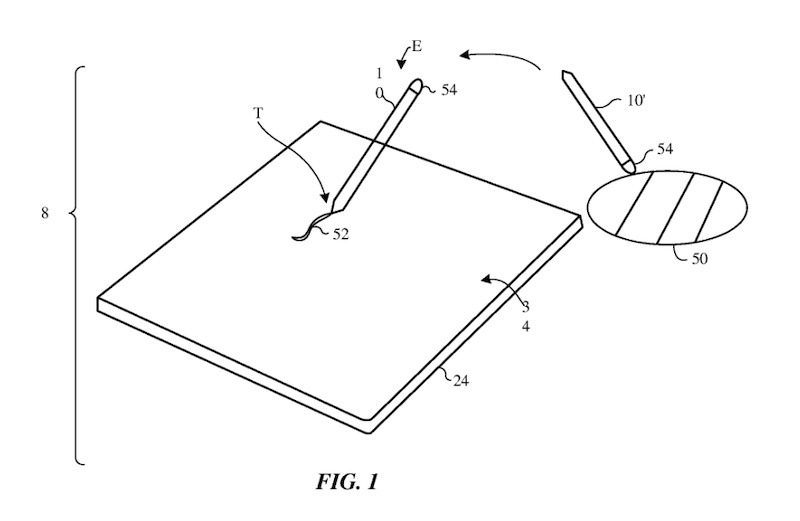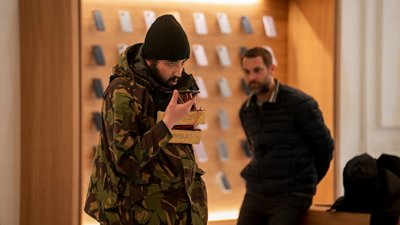Apple is working on new stylus sensor technology that can sample colors from external objects, possibly as a feature for a future Apple Pencil.
Current Apple Pencil models already use sensors to determine tilt and pressure, which makes for more natural writing or drawing on an iPad. If Apple's patents are any indication, future models could feature even more advanced sensor suites.
In a patent application first filed for in November 2019 and published Thursday, Apple essentially describes an Apple Pencil-type device that could use a suite of light sensors to detect and sample colors on an object.
"The color sensor may have a plurality of photodetectors each of which measures light for a different respective color channel," the patent reads. "The color sensor may also have one or more light-emitting devices. Control circuitry may use the light-emitting devices to illuminate an external object while using the photodetectors to measure reflected light to determine the color of the external object."
Essentially, the patent is describing a sensor that can accurately sample a color. A user may be able to touch the stylus on an object like a shirt, and then use that exact color in a drawing or illustration app.
The stylus could sample colors using a suite of light-emitting devices to emit lights of different colors. A corresponding sensor suite could then detect light in different color channels, and send that data to a connected device like an iPad Pro.
 An illustration of the color sampling sensor placed on the opposite side of the writing tip of an Apple Pencil. Credit: Apple
An illustration of the color sampling sensor placed on the opposite side of the writing tip of an Apple Pencil. Credit: AppleThat could obviously be a boon for designers, illustrators and artists who use an Apple Pencil and other Apple products. While there are options to sample the color of physical objects, they require third-party accessories or apps to function.
Color sampling in a stylus is an idea that Apple has explored in the past. In a 2014 patent application, the company contends that a special stylus nib with light sensors could also be used to grab the color of nearby objects.
That previous patent also concerned various other interchangeable nibs or stylus tips, while Thursday's patent application focuses solely on color sampling.
Another interesting difference is that Apple's more recent patent suggests that the color sensor suite could actually be on the side of the stylus opposite the writing or drawing tip. An included patent figure illustrates this configuration.
The patent application Thursday lists Nicholas C. Lewty, Mahdi Nezamabadi, Po-Chieh Hung and Tze Yong Poh as inventors. Of those, only Tze Yong Poh has worked on Apple patent in the past — specifically relating to optical-sensor technology.
Apple has filed numerous patents applications in the past for future Apple Pencil functionality. That includes patents covering sensors for tracing 3D objects, haptic systems to measure a user's grip, and a full touch-sensitive control suite.
With that being said, Apple patent applications are a poor indication of the company's future product plans and they don't give any indication when new products or features might arrive on a device.
 Mike Peterson
Mike Peterson







-m.jpg)






 Christine McKee
Christine McKee
 Malcolm Owen
Malcolm Owen

 Charles Martin
Charles Martin


 Mike Wuerthele
Mike Wuerthele



-m.jpg)






9 Comments
Yes, cyan, magenta, yellow, black...
That would basically be a colorimeter.
Would be the most interesting innovation since Jobs died.
Following the news of Apple's Glasses privacy innovation THIS is just another example of Apple's creativity in one day!
Hope these are true. Exciting times ahead!